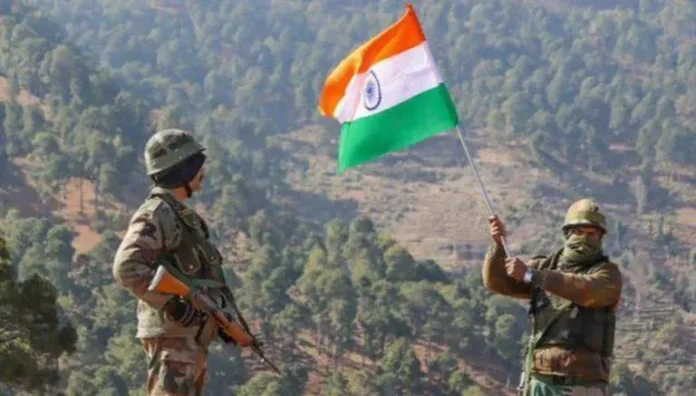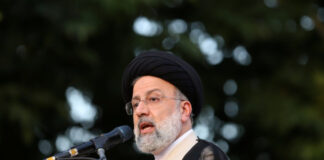Kargil Vijay Diwas is celebrated every 26th of July to commemorate the valour and sacrifice of our soldiers who fought in the Kargil war of 1999. The war was fought by Indian soldiers in the Kargil district of Jammu and Kashmir, now situated in Ladakh to oust the intruders who had crossed the LoC (Line of Control) from the side of Pakistan and occupied vacant posts in Indian territory during winter. One of the main aims of Pakistani intruders was to capture the road NH-1A that linked Srinagar to Leh and was the main supply route to the Indian forces in Siachen.
By Dhritiman Mukherjee
Through Kargil, Pakistan also wanted to revive the insurgency in Kashmir that was in decline in the late 1990s. The Kargil episode is a tale of immense sacrifice and bravery shown by the Indian forces in inclement weather conditions to protect the territorial integrity of our nation. On 26th July, 1999 the Kargil War officially came to an end as all intruding Pakistani forces were pushed back from Indian territory.
The Kargil Vijay Diwas presents us an opportunity to look back at how the war was a landmark event in the relations between India and Pakistan. This article will point out four major characteristics of the Kargil War that made it unique in the history of conflicts between India and Pakistan. Firstly, Kargil challenged the logic of the theory of classical nuclear deterrence in the context of South Asia; secondly, it was marked by strategic restraint on the part of India which was conditioned by the presence of nuclear weapons and US diplomacy; thirdly, the Kargil War also challenged the paradigms of democratic peace theory and fourthly, it highlighted Pakistan’s tactics of surprise and deception to gain advantage over India.
Challenge to the Logic of Nuclear Deterrence
Both India and Pakistan had become overt nuclear powers after they tested their nuclear weapons in May, 1998. Many assumed that the logic of nuclear deterrence would bring stability and peace to the conflict/crisis prone relationship between India and Pakistan. In other words, the presence of nuclear weapons would possibly make war an obsolete option for both the nations to achieve their political objectives. The costs of a nuclear war would far outweigh its benefits. Such optimism was based on the experience in Cold War, where nuclear deterrence between US and the Soviet Union largely contributed to the reduction of tensions between them. The prospects of such a viewpoint received a boost when Prime Minister Vajpayee visited Lahore in February 1999 and signed the famous Lahore Declaration with Nawaz Sharif, the then Pakistan Prime Minister. It included a number of nuclear and non-nuclear Confidence Building Measures (CBMs).
Hence, when Kargil War was launched by Pakistan in the spring of 1999, it came as a surprise to proponents of nuclear deterrence. It became clear that the theory of nuclear deterrence that developed in the Cold War era was inadequate to explain the security predicament in South Asia. Kargil marked the beginning of the tumultuous history of India and Pakistan relations after their overt acquisition of nuclear weapons in 1998 which has challenged the classic theorizing on nuclear deterrence based on Cold War experience. For Pakistan, the nuclear weapons acted as an equalizer that cancelled out the advantage of India in conventional warfare. It acted as a shield that would deter India from retaliating against Pakistani aggression in Kashmir. The logic of stability-instability paradox has been able to explain the crisis prone nature of India-Pakistan relationship in a nuclear environment by pointing out how stability at the strategic level engenders instability at lower or tactical levels.
Strategic Restraint of India
Indian response was calibrated; it used both ground forces and aerial support to flush the infiltrators out from the positions which they occupied in Indian territory. This was the first time since the 1971 war, when India employed its air force in a war against Pakistan. Even though such an action was considered to be a case of vertical escalation in the war, India was very careful to have not crossed the LoC that separated the two nations in Kashmir. India didn’t opt for horizontal escalation either as it didn’t open other fronts of action in the international border in Rajasthan and Punjab. Such a stance was remarkably different from the ones that India had adopted in the previous wars with Pakistan. In 1965 and 1971 war, India and Pakistan had engaged in skirmishes along the international border.
The reason behind India’s strategic restraint was the presence of nuclear weapons in Pakistan’s arsenal. As decision makers in India were not certain about the nuclear redlines of Pakistan, it preferred to limit the response on the Indian side of the LoC. Apart from that active US diplomacy in the region due to the non-proliferation concerns of Washington were also instrumental in limiting India’s response. Nawaz Sharif finally ordered the withdrawal of troops from Indian territory after he met US President Bill Clinton in Washington in July, 1999.
Problematized the Democratic Peace Theory
According to the Liberal theory of international relations, the spread of democracy in the world ensures global peace and security. This is also known as the Democratic peace theory whose progenitors were Immanuel Kant and Michael Doyle. According to the theory, democracies don’t fight each other as disputes between them are settled peacefully through dialogue and negotiation.
However, the Kargil War has proved to problematize this assumption as both India and Pakistan were being ruled by democratically elected leaders at the time of the war. The reason why democracy failed to prevent the war between these two countries was the Pakistan Army. In Pakistan, the Army has occupied a pivotal position in the country’s domestic and foreign affairs since independence.
The Pakistan Army is the final arbiter when it comes to determining relations with India even if a civilian government is at the helm of affairs. Evidences have pointed to the fact that Nawaz Sharif had partial knowledge of the Army’s plan in Kargil. The planning of the Kargil operation had started when the Lahore Declaration was being signed. Kargil was the brainchild of Pervez Musharaf, the then Chief of Army Staff. He had planned the war along with a few other officers who were in charge of the Northern Areas and the intelligence wing- ISI.
Tactics of Surprise and Deception
The Kargil war was also an example of how a weaker, revisionist power uses the tactics of surprise and deception to gain advantage in a war against a relatively strong adversary. The planners of Kargil were accompanied by the thought that the Indian forces would be caught in surprise defending a territory where they would never expect an intrusion due to inclement weather conditions. The resolve and determination of the Pakistan army would cut short the conventional military advantage of India. The theater of conflict was also favourable to Pakistan as intruders captured heights that dominated the NH 1A road. The ploy of deception also played out well as it took more than a month for the Indian army to figure out that the intruders were regular forces of the Northern Light Infantry. This allowed Pakistan to deny its involvement in the misadventure and categorize it as an uprising against Indian misrule in Kashmir.
Conclusion
Thus, it can be argued that the above mentioned features of the Kargil War had not only challenged the established paradigms of IR theory (nuclear deterrence and democratic peace) but also defined the way in which war could be fought between two nuclear armed rivals. When it comes to learning, India and Pakistan had drawn different lessons from the Kargil War. For India, Kargil proved that they could retaliate against Pakistani intrusions in a calibrated manner without breaching the nuclear red lines. For Pakistan, Kargil demonstrated how it can continue its strategy of using force to change the status-quo in Kashmir without inviting any decisive response from India due to its overt nuclear status. Such contradictory lessons can be detrimental to the deterrence stability that exists in the subcontinent.
As the relationship between New Delhi and Islamabad remains conflictual and the Kashmir dispute lingers on, Pakistan needs to refrain from engaging in actions that could spiral into a nuclear confrontation. Risk reduction measures should be adopted to build mutual trust and avoid inadvertent escalation. The Kargil war can be an example in this case as political communication remained intact throughout the episode. The Prime Ministers of the two nations spoke to each other over the phone and so did the DGMOs (Director General of Military Operations). This prevented the war from escalating to higher levels.
This article first appeared in www.vifindia.org and it belongs to them.








